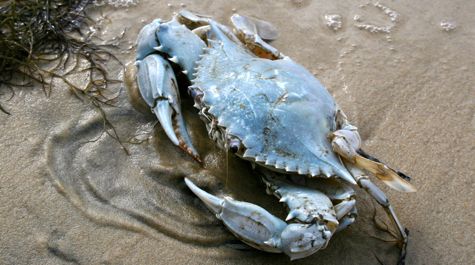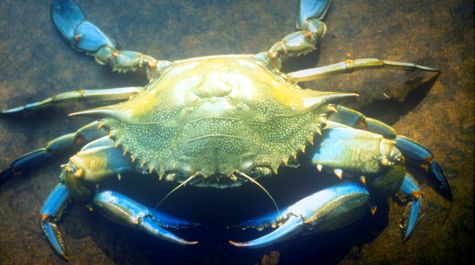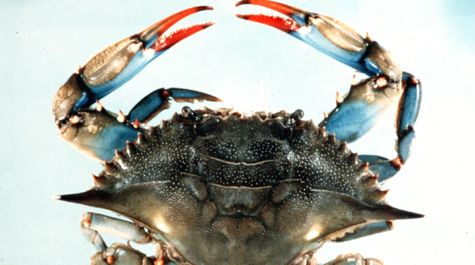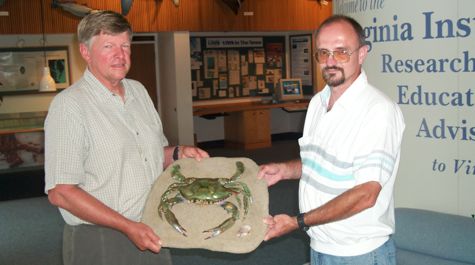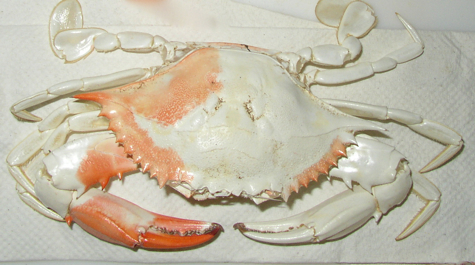Crabber finds "true blue" blue crab
Despite their name, blue crabs are usually not completely blue. But Sally Epps, a crabber from Hayes, did recently catch an all-blue blue crab, hoisting it from a crab pot on the James River near Craney Island.
"This is the first crab like this I've seen in 11 years on the water," says Epps.
VIMS professor Rom Lipcius says it's rare to find blue crabs that are completely blue, but he notes that "they have been found previously, as have albino crabs." Lipcius notes that purple crabs have also been reported. In a typical blue crab, only the legs are blue; the shell is beige. Female blue crabs have red tips on their claws.
VIMS professor Jeff Shields notes that purple coloration can be caused by a parasite that affects both the muscles and shell. He has seen this phenomenon "two or three times" in crabs from Chesapeake Bay. Shields has also seen a rare orange coloration that is caused by a virus. He says that the "true-blue" blue crab appears to be a color variant and not an infection.
Epps' "true-blue" crab, which died shortly after arriving at VIMS, has been frozen for future study. It joins a growing list of atypical blue crabs that have been brought to VIMS by area crabbers. They include a "bilateral gynandromorph"—a crab that is split right down the middle, with its right half female and its left half male. The VIMS Visitor Center holds what is considered to be the largest blue crab recorded from Chesapeake Bay—a monster that weighed 1.1 pounds and had a shell that stretched almost 11 inches across.

